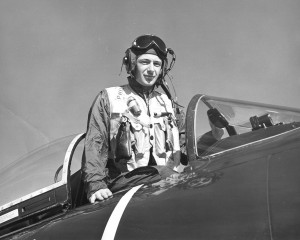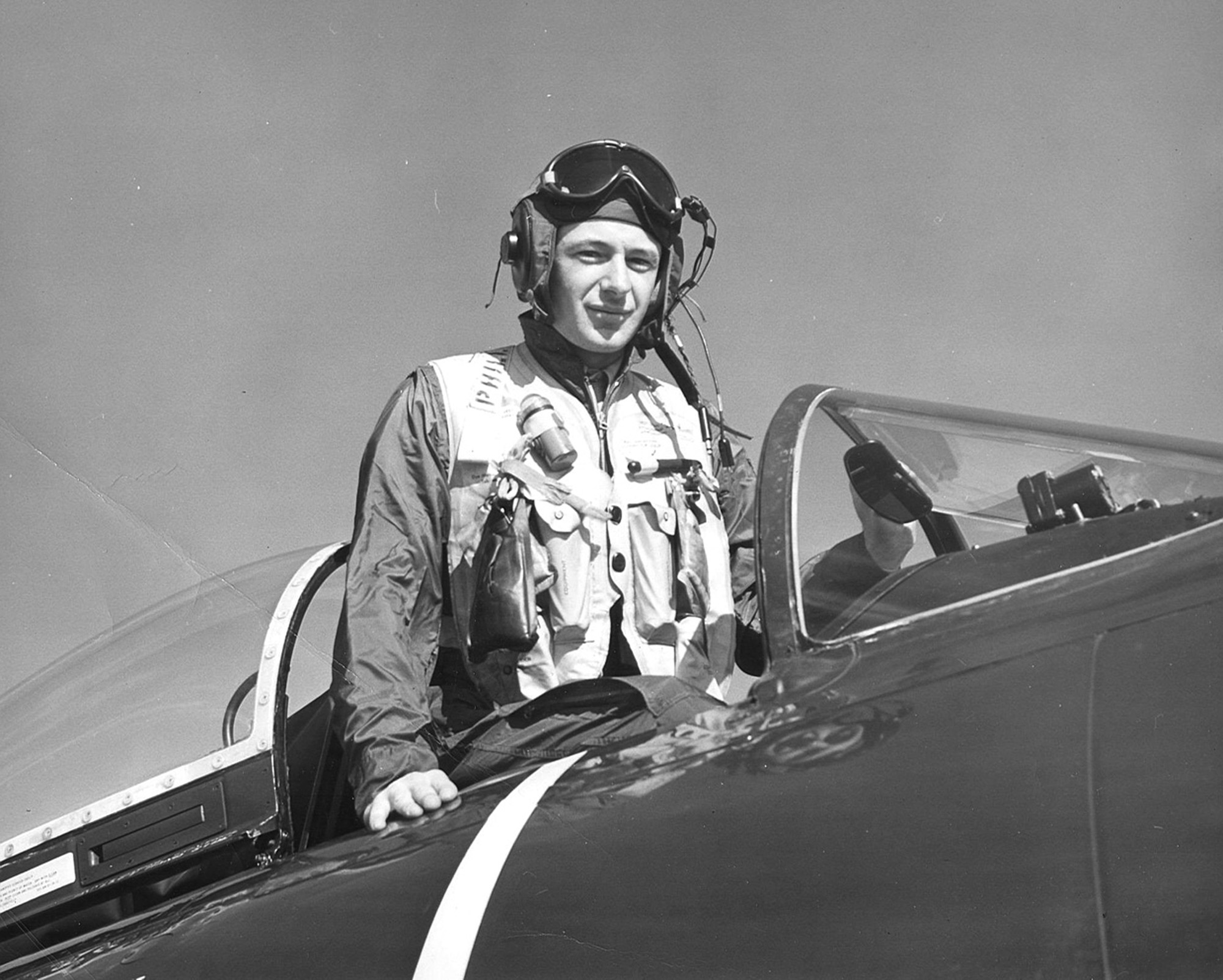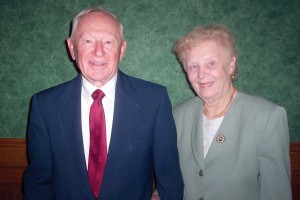By Fred “Crash” Blechman

Ed Phillips flew the Douglas AD Skyraider in Attack Squadron 195 during the Korean War from the aircraft carrier USS Princeton.
The Naval Aviation Foundation and the Association of Naval Aviation merged a year ago, with the NAF as the surviving organization. However, the more than 60 ANA squadrons of mostly-retired naval aviators have retained their ANA title for their squadron meetings.
An ANA meeting of the San Fernando Valley Two-Block Fox Squadron on September 21 featured Commander Edward Phillips (USN, ret.) as the guest speaker. The dinner meeting was held at the Odyssey Restaurant. After a full-course dinner and some brief announcements, Commanding Officer Pete Prieto introduced Phillips, who had extensive flying experience during his 26 years of Navy service.
A native of Roselle, N.J., Phillips was sworn into the Navy for flight training in April 1944. He received his pilot wings of gold at Pensacola in July 1947, and then completed operational training in the TBM Avenger torpedo bomber.
In January 1948, he reported to Carrier Air Group 19 at Alameda, Calif., where he flew the Douglas AD Skyraider in Attack Squadron 195. After numerous training exercises off the West Coast and Hawaii in 1948 and 1949, the group was deployed on short notice to the Western Pacific in January 1950, for a “Show the Flag” cruise on the aircraft carrier USS Boxer.

Commander Officer Pete Prieto (right) of the ANA San Fernando Valley Squadron presented a certificate of appreciation to the guest speaker, Commander Ed Phillips.
Returning in June, just before the Korean War began, the group entered an intense training period while aircraft carrier USS Princeton was taken out of mothballs and readied for operation. Princeton deployed in November 1950, and was in Hawaii when China entered the war. After a high-speed crossing, the ship joined Task Force 77 in the Sea of Japan, and on December 5, launched its first strikes, providing support for the Marines at the Chosin Reservoir.
Using several slides of photos and maps, Phillips told the audience of his experience flying the AD Skyraider on a total of 51 missions of close air support, bridge strikes, armed reconnaissance and interdiction, and two unusual assignments: tunnel busting and a torpedo attack on the Hwatchon Reservoir dam.
In his naval career, CDR Phillips qualified in 15 different aircraft types, including six jets, and flew off nine aircraft carriers. He served in two other squadrons in addition to VA-195: Air Development Squadron 3 and Attack Squadron 56. His ship’s company duty included tours as a catapult and arresting gear officer on USS Kearsarge and as navigator on USS Valley Forge during the Vietnam War.
He served as a flight training officer for three reserve squadrons at the Atlanta Naval Air Station, in the area of engineering, quality assurance, and flight test officer at the Quonset Point Aircraft Rework Facility, as well as surface operations officer on the Naval Air Forces, Atlantic Fleet staff, and as a test officer at the Deseret Test Center. His decorations include the Distinguished Flying Cross, three Air Medals, the Navy Commendation Medal with combat V, and numerous service and campaign medals.
Following retirement from the Navy in 1970, Phillips attended graduate school at the University of Southern California. After receiving a PhD degree in physics, he served on the Physics Department faculty and with the Space Sciences Center. There he engaged in laboratory research, investigating the interaction of planetary atmospheric gasses with extreme UV radiation, and managed a sounding rocket program, which prepared and launched instruments from the White Sands Missile Range.
In 1981 he left USC to join the research staff at Litton Guidance and Control in Woodland Hills, where he managed R&D groups developing, for use in inertial navigation systems, three types of optical gyros that used nuclear magnetic resonance, fiber optics and ring lasers. He retired from Litton in 1991.
Phillips lives in Woodland Hills with his wife of 57 years, Doris. They have four daughters, 10 grandchildren and one 6-year-old great-grandchild.
For location of a squadron near you, go to [http://www.anahq.org/about/squadrons.htm].












